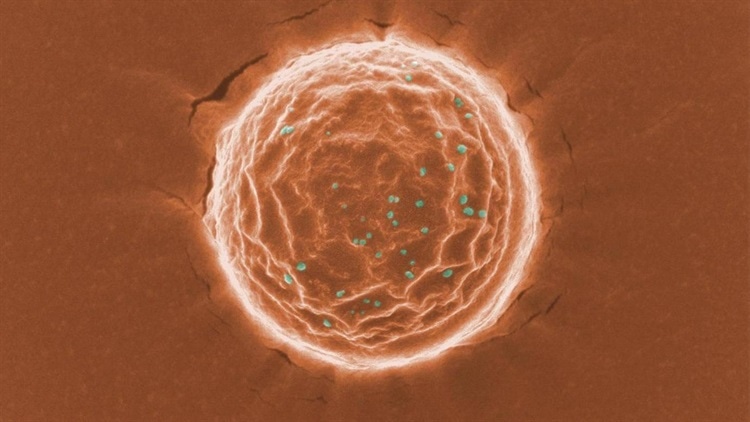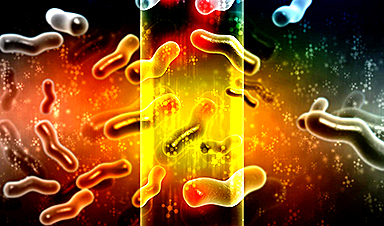At the University of Chicago, scientists have developed an absolutely innovative, promising treatment for COVID-19 in the form of nanoparticles with the ability to trap SARS-CoV-2 viruses inside the body and use the body’s own immune system to kill them.
The “nanotraps” lure the virus by imitating the target cells infected by the virus. When the virus gets trapped by the nanotraps, it is then sequestered from other cells and targeted for destruction by the immune system.
Theoretically, these nanotraps could be used on different variants of the virus, resulting in a promising new way to suppress the virus in the future. The therapy is still in the early stages of testing, but the researchers believe that it could be administered through a nasal spray as a treatment for COVID-19.
The findings of the study were published in the journal Matter on April 19th, 2021.
Since the pandemic began, our research team has been developing this new way to treat COVID-19. We have done rigorous testing to prove that these nanotraps work, and we are excited about their potential.
Jun Huang, Assistant Professor, Pritzker School of Molecular Engineering
The study was led by Huang’s lab.
Designing the Perfect Trap
Led by postdoctoral scholar Min Chen and graduate student Jill Rosenberg, the researchers designed the nanotrap by analyzing the mechanism used by SARS-CoV-2 to bind to cells—a spike-like protein on its surface that attaches itself to the ACE2 receptor protein found on a human cell.
The nanoparticles are made of FDA-approved polymers and phospholipids with a diameter of about 500 nm—quite smaller than a cell. This implies that the nanotraps can reach more areas within the body and capture the virus more effectively.
To ensure the tiny particles appeared the same way they expected, the researchers collaborated with the lab of Associate Professor Bozhi Tian to employ electron microscopes to achieve a better look.
From our imaging, we saw a solid core and a lipid bilayer shell. That’s the essential part because it mimics the cell.
Bozhi Tian, Associate Professor, Department of Chemistry, University of Chicago
The safety of the system was tested by the researchers in a mouse model, and no toxicity was found. Then, the nanotraps were tested against a pseudovirus, which is a less potent model of a virus that does not replicate, in human lung cells in tissue culture plates. It was found that they totally blocked the entry of the pseudovirus into the cells.
As soon as the pseudovirus attached itself to the nanoparticle—which took about 10 minutes after injection during the tests—the nanoparticles used a molecule that summons the macrophages in the body to engulf and disintegrate the nanotrap.
In general, macrophages eat nanoparticles inside the body. However, the nanotrap molecule accelerates the process. It was found that the nanoparticles were cleared and disintegrated within 48 hours.
The nanoparticles were also with a pseudovirus in an ex vivo lung perfusion system—a pair of donated lungs maintained alive with a ventilator—and it was discovered that they totally blocked infection in the lungs.
Moreover, they collaborated with scientists at Argonne National Laboratory to test the nanotraps using a live virus (instead of a pseudovirus) in an in vitro system. Their system was found to inhibit the virus 10 times better than neutralizing antibodies or soluble ACE2 alone.
Image Credit: Chen and Rosenberg et al.
Post by Amanda Scott, NA CEO. Follow her on twitter @tantriclens
Thanks to Heinz V. Hoenen. Follow him on twitter: @HeinzVHoenen
News
Nanoflowers rejuvenate old and damaged human cells by replacing their mitochondria
Biomedical researchers at Texas A&M University may have discovered a way to stop or even reverse the decline of cellular energy production—a finding that could have revolutionary effects across medicine. Dr. Akhilesh K. Gaharwar [...]
The Stunning New Push to Protect the Invisible 99% of Life
Scientists worldwide have joined forces to build the first-ever roadmap for conserving Earth’s vast invisible majority—microbes. Their new IUCN Specialist Group reframes conservation by elevating microbial life to the same urgency as plants and [...]
Scientists Find a Way to Help the Brain Clear Alzheimer’s Plaques Naturally
Scientists have discovered that the brain may have a built-in way to fight Alzheimer’s. By activating a protein called Sox9, researchers were able to switch on star-shaped brain cells known as astrocytes and turn them into [...]
Vision can be rebooted in adults with amblyopia, study suggests
Temporarily anesthetizing the retina briefly reverts the activity of the visual system to that observed in early development and enables growth of responses to the amblyopic eye, new research shows. In the common vision [...]
Ultrasound-activated Nanoparticles Kill Liver Cancer and Activate Immune System
A new ultrasound-guided nanotherapy wipes out liver tumors while training the immune system to keep them from coming back. The study, published in Nano Today, introduces a biodegradable nanoparticle system that combines sonodynamic therapy and cell [...]
Magnetic nanoparticles that successfully navigate complex blood vessels may be ready for clinical trials
Every year, 12 million people worldwide suffer a stroke; many die or are permanently impaired. Currently, drugs are administered to dissolve the thrombus that blocks the blood vessel. These drugs spread throughout the entire [...]
Reviving Exhausted T Cells Sparks Powerful Cancer Tumor Elimination
Scientists have discovered how tumors secretly drain the energy from T cells—the immune system’s main cancer fighters—and how blocking that process can bring them back to life. The team found that cancer cells use [...]
Very low LDL-cholesterol correlates to fewer heart problems after stroke
Brigham and Women's Hospital's TIMI Study Group reports that in patients with prior ischemic stroke, very low achieved LDL-cholesterol correlated with fewer major adverse cardiovascular events and fewer recurrent strokes, without an apparent increase [...]
“Great Unified Microscope” Reveals Hidden Micro and Nano Worlds Inside Living Cells
University of Tokyo researchers have created a powerful new microscope that captures both forward- and back-scattered light at once, letting scientists see everything from large cell structures to tiny nanoscale particles in a single shot. Researchers [...]
Breakthrough Alzheimer’s Drug Has a Hidden Problem
Researchers in Japan found that although the Alzheimer’s drug lecanemab successfully removes amyloid plaques from the brain, it does not restore the brain’s waste-clearing system within the first few months of treatment. The study suggests that [...]
Concerning New Research Reveals Colon Cancer Is Skyrocketing in Adults Under 50
Colorectal cancer is striking younger adults at alarming rates, driven by lifestyle and genetic factors. Colorectal cancer (CRC) develops when abnormal cells grow uncontrollably in the colon or rectum, forming tumors that can eventually [...]
Scientists Discover a Natural, Non-Addictive Way To Block Pain That Could Replace Opioids
Scientists have discovered that the body can naturally dull pain through its own localized “benzodiazepine-like” peptides. A groundbreaking study led by a University of Leeds scientist has unveiled new insights into how the body manages pain, [...]
GLP-1 Drugs Like Ozempic Work, but New Research Reveals a Major Catch
Three new Cochrane reviews find evidence that GLP-1 drugs lead to clinically meaningful weight loss, though industry-funded studies raise concerns. Three new reviews from Cochrane have found that GLP-1 medications can lead to significant [...]
How a Palm-Sized Laser Could Change Medicine and Manufacturing
Researchers have developed an innovative and versatile system designed for a new generation of short-pulse lasers. Lasers that produce extremely short bursts of light are known for their remarkable precision, making them indispensable tools [...]
New nanoparticles stimulate the immune system to attack ovarian tumors
Cancer immunotherapy, which uses drugs that stimulate the body’s immune cells to attack tumors, is a promising approach to treating many types of cancer. However, it doesn’t work well for some tumors, including ovarian [...]
New Drug Kills Cancer 20,000x More Effectively With No Detectable Side Effects
By restructuring a common chemotherapy drug, scientists increased its potency by 20,000 times. In a significant step forward for cancer therapy, researchers at Northwestern University have redesigned the molecular structure of a well-known chemotherapy drug, greatly [...]





















